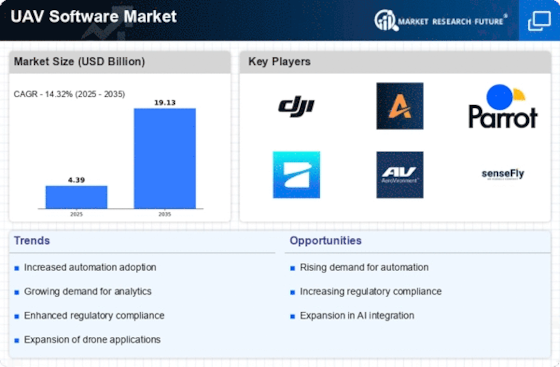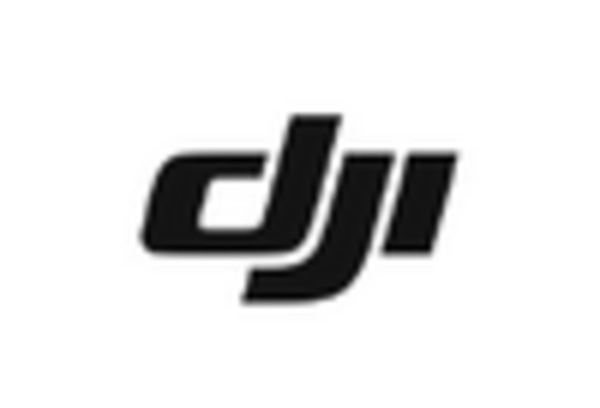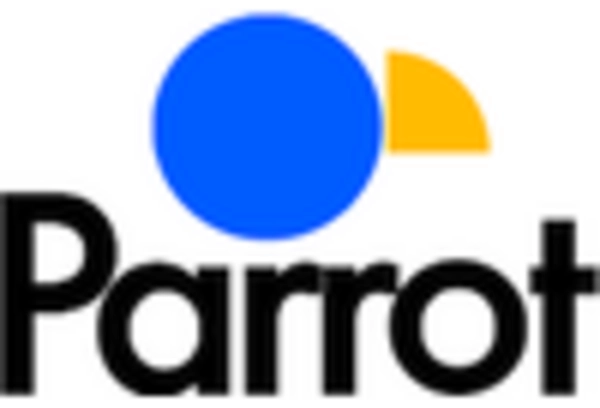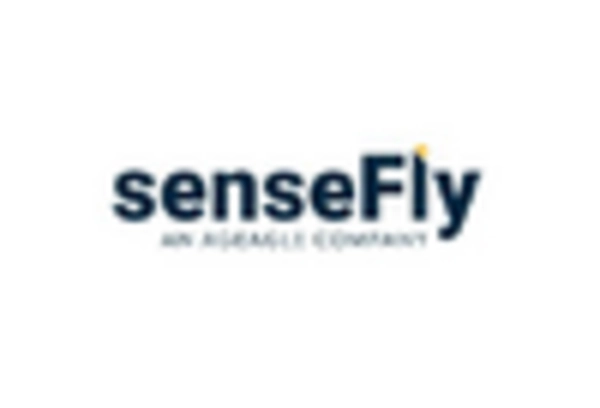Advancements in UAV Technology
Technological advancements are a key driver of growth in the UAV Software Market. Innovations in areas such as battery life, sensor technology, and data analytics are enhancing the capabilities of UAVs, making them more efficient and versatile. For example, the introduction of high-resolution cameras and LiDAR systems has expanded the range of applications for UAVs in fields like surveying and mapping. Furthermore, the integration of machine learning algorithms into UAV software is enabling real-time data processing and decision-making. As these technologies continue to evolve, the demand for sophisticated UAV software that can harness these advancements is expected to rise, propelling the UAV Software Market forward.
Rising Awareness of UAV Benefits
The growing awareness of the benefits associated with UAV technology is driving interest in the UAV Software Market. Organizations across various sectors are increasingly recognizing how UAVs can improve operational efficiency, reduce costs, and enhance data collection processes. For instance, in agriculture, UAVs are being utilized for precision farming, which allows farmers to optimize resource use and increase crop yields. This awareness is not limited to large enterprises; small and medium-sized businesses are also exploring UAV solutions to gain a competitive edge. As more organizations understand the advantages of UAVs, the demand for specialized UAV software that can maximize these benefits is expected to rise, further propelling the UAV Software Market.
Regulatory Support and Frameworks
The UAV Software Market is significantly influenced by evolving regulatory frameworks that support the integration of drones into national airspace systems. Governments are increasingly recognizing the potential of UAVs for economic growth and public safety, leading to the establishment of regulations that facilitate their use. For instance, the Federal Aviation Administration (FAA) has implemented rules that streamline the approval process for commercial drone operations. This regulatory support not only fosters a conducive environment for UAV deployment but also encourages software developers to create compliant solutions that meet safety and operational standards. As regulations continue to evolve, the UAV Software Market is likely to benefit from increased legitimacy and wider adoption of UAV technologies.
Growing Investment in UAV Startups
Investment in UAV startups is a notable trend impacting the UAV Software Market. Venture capitalists and private equity firms are increasingly funding innovative companies that develop cutting-edge UAV technologies and software solutions. This influx of capital is fostering a vibrant ecosystem of startups that are pushing the boundaries of what UAVs can achieve. In 2023 alone, investments in UAV-related startups reached approximately USD 2 billion, highlighting the sector's attractiveness to investors. As these startups bring new ideas and technologies to market, they are likely to stimulate competition and innovation within the UAV Software Market, ultimately benefiting end-users with enhanced software offerings.
Increased Demand for Drone Applications
The UAV Software Market is experiencing a surge in demand for various drone applications across multiple sectors. Industries such as agriculture, construction, and logistics are increasingly adopting UAV technology for tasks like crop monitoring, site surveying, and package delivery. According to recent estimates, the market for commercial drones is projected to reach USD 43 billion by 2024, indicating a robust growth trajectory. This heightened interest in drone applications necessitates advanced software solutions that can enhance operational efficiency and data management. As organizations seek to leverage UAVs for competitive advantage, the demand for specialized UAV software is likely to escalate, driving innovation and investment in the UAV Software Market.


















Leave a Comment